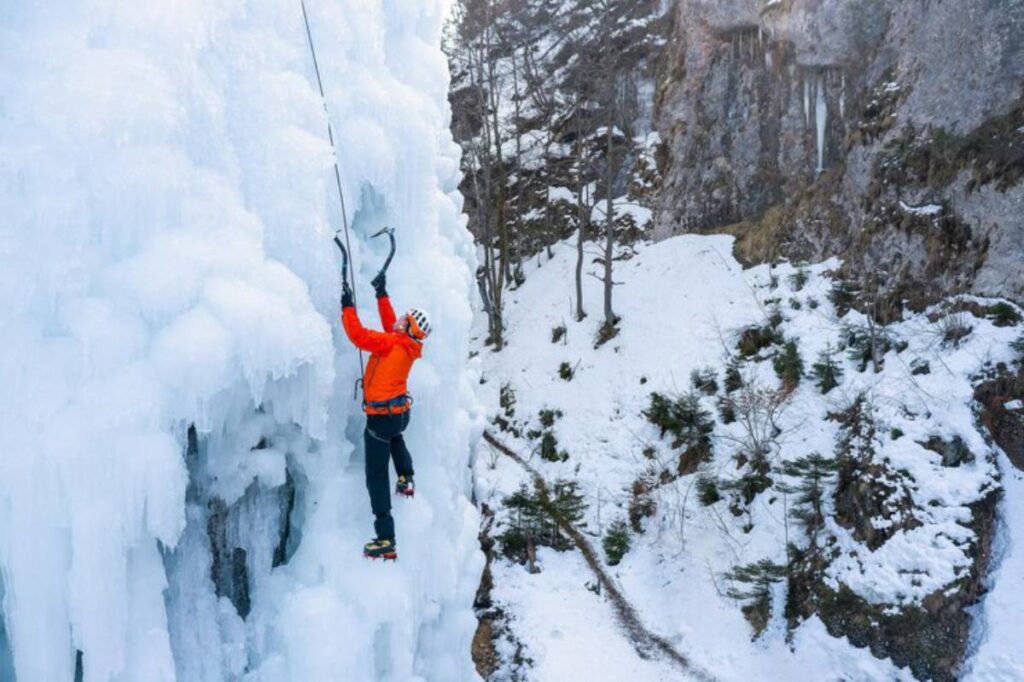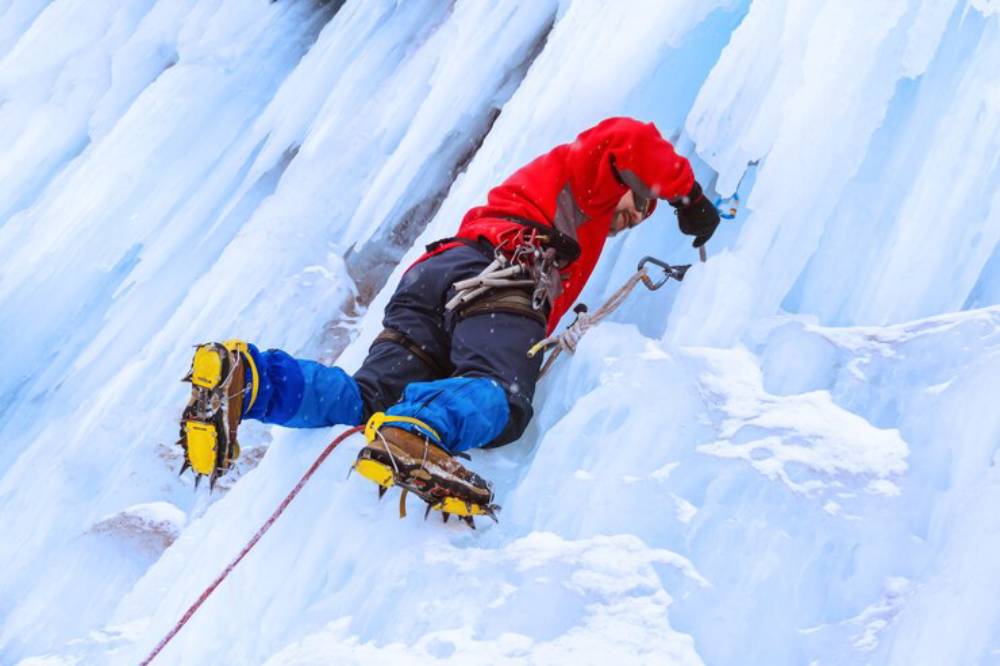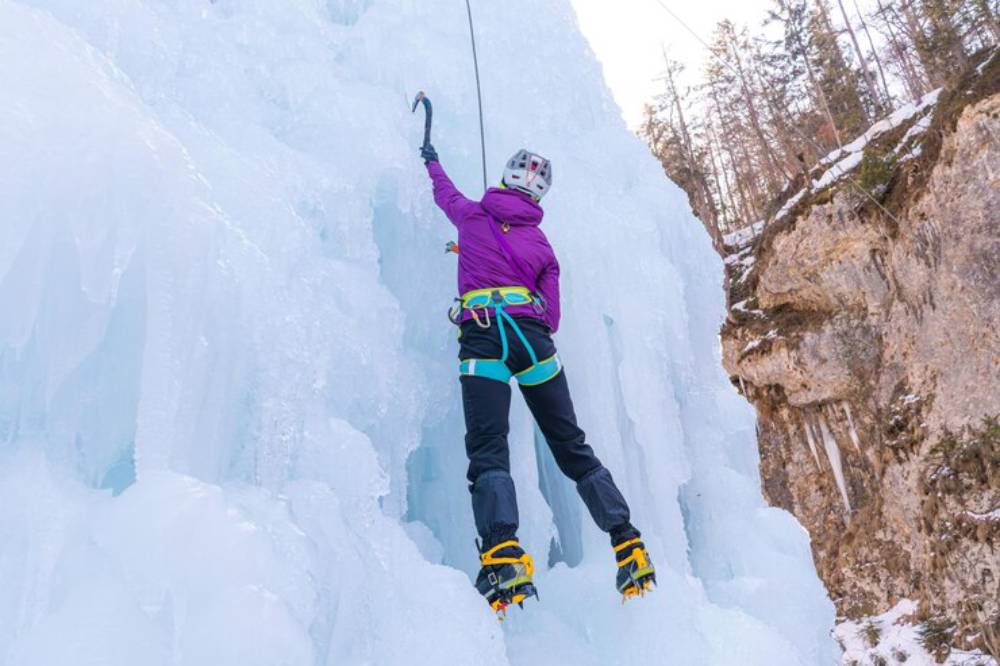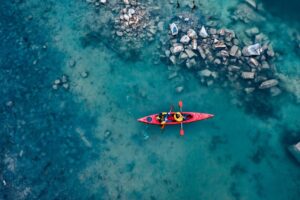The Travel Blog

Ice Climbing in Iceland: Scaling Frozen Waterfalls
Gripping the Ice, Chasing the Dream
Picture yourself dangling from a vertical wall of glistening blue ice, your crampons biting into a frozen waterfall, and your ice axes swinging in rhythm. The wind howls, your breath fogs in the frigid air, and adrenaline pulses through your body. This is not a dream — it’s ice climbing in Iceland, one of the most breathtaking glacier adventures and extreme cold sports in the world.
Iceland’s dramatic winter landscapes, with their towering glaciers and frozen cascades, offer a surreal playground for climbers of all skill levels. Whether you’re a beginner curious about icy ascents or a seasoned alpinist chasing your next challenge, this blog will guide you through everything you need to know to conquer the ice safely and confidently.
Why Iceland for Ice Climbing?
1. Frozen Waterfalls and Glaciers
Iceland’s natural environment provides:
- Frozen waterfalls like Gullfoss and Svartifoss
- Towering glaciers such as Sólheimajökull and Vatnajökull
- Ice caves and vertical routes with surreal blue textures
2. Easy Access to Ice Climbing Sites
Many popular spots are just a few hours from Reykjavik.
This means:
- Day trips are totally doable
- You don’t need to venture too far for epic climbs
- Options range from quick excursions to multi-day adventures
3. High-Quality Guiding Services
- IFMGA-certified mountain guides
- Gear included with most tours
- Strong emphasis on safety and sustainability
Top Ice Climbing Locations in Iceland
Sólheimajökull Glacier
- Skill Level: Beginner–Intermediate
- Highlights: Mixed terrain, easy access from Vik, brilliant for first-timers.
Vatnajökull Glacier
- Skill Level: Intermediate–Advanced
- Highlights: Vast ice formations and challenging walls are ideal for those with prior climbing experience.
Gullfoss Canyon
- Skill Level: Advanced
- Highlights: Icefalls, vertical frozen waterfalls, and dramatic Golden Circle views.
What a Guided Ice Climbing Tour Includes
Briefing and Gear Setup
- Safety overview
- Gear distribution (helmet, harness, crampons, axes)
- Instruction on basic ice techniques
The Glacier Hike
- Trek across ice terrain
- Learn glacier features and safety habits
- Use crampons and trekking poles
The Climb
- Roped ascents
- Routes set by guides
- Support on footwork, axe placement, and pacing
What to Pack
Wear
- Base layer: merino wool or thermal synthetics
- Mid layer: insulated down or fleece
- Outer shell: windproof & waterproof jacket and trousers
- Accessories: warm hat, ski gloves, neck gaiter, goggles
Bring
- Small backpack
- High-calorie snacks
- Refillable water bottle
- GoPro or a phone with a waterproof case
- Sunglasses (for snow glare)
Who Should Try It?
Perfect For:
- Adventurous travellers aged 12+
- Moderate fitness levels
- Nature and adrenaline lovers
Avoid If:
- You have vertigo or joint problems
- You dislike cold, snow, or physical effort
- You’re looking for a passive tour (this one’s hands-on!)
Anecdote: My First Time on the Ice

The first time I ice climbed, I slipped on the first swing and felt a pang of fear. My guide calmly said, “You’re safe. Just breathe and swing again.” That reassurance helped me refocus. The next swing stuck, and I was climbing. By the top, I felt powerful — like I’d conquered something far bigger than a wall of ice.
When to Go
| Season | Months | Why Go | Watch Out |
|---|---|---|---|
| Winter | Nov–Mar | Best ice quality | Coldest weather |
| Shoulder | Oct, Apr | Quieter trails | Unstable conditions |
| Summer | Not suitable | Ice too unstable for climbing |
Staying Safe
- Always climb with a guide
- Wear a helmet
- Check that the gear is properly fitted
- Keep three points of contact
- Stay hydrated and nourished
Ethical Ice Climbing Practices
- Choose certified operators
- Respect the glacier rules
- Don’t litter or damage formations
- Avoid touching delicate ice sculptures
- Offset carbon emissions from travel
Explore more safe practices in How to Stay Safe During Extreme Sports Activities
Photo Tips

- Use burst mode for climbers in motion
- Capture textures of blue ice
- Use helmet mounts for GoPro
- Focus on depth and contrast
- Take a wide shot at the summit!
Why People Love It
Ice climbing isn’t just about scaling ice.
It’s about:
- Trusting your gear and body
- Being in the moment
- Experiencing nature in its rawest form
- Feeling empowered after the climb
The Mindset of Ice Climbing: More Than Muscle
Ice climbing in Iceland is as much a mental challenge as it is a physical feat. While crampons and ice axes help you ascend the walls, it’s your mindset that determines whether you keep going when your legs shake and your breath fogs in the icy wind.
1. Trust the Gear, Trust Yourself
Fear is natural when you’re halfway up a frozen wall. But certified gear is built for these extremes. Learning to trust your tools — and your training — is the first mental hurdle you’ll overcome.
2. One Swing at a Time
Looking up at the entire climb can feel overwhelming. Experienced climbers know to focus on the next move — just one solid axe placement, one confident step. Small wins build big progress.
3. Breathe Through the Freeze
Controlled breathing helps regulate your heart rate, maintain focus, and fight fatigue. Even in -10°C, the simple rhythm of inhale-exhale becomes a powerful anchor.
4. Let the Landscape Ground You
There’s nothing like pausing mid-ascent to glance around. The Icelandic wilderness stretches in silence, reminding you that you’re part of something vast, ancient, and beautiful. That perspective turns anxiety into awe.
5. You Don’t Have to Reach the Top
Success isn’t always summiting the wall. Sometimes it’s showing up, strapping in, and trying. Every climb builds courage, and each descent teaches something new.
Beyond the Ice: Icelandic Culture Meets the Climb
While Iceland’s frozen terrain offers unforgettable climbs, the experience doesn’t end when you unclip your harness. Ice climbing tours often come with rich cultural immersion that lets you connect with the land and its people on a deeper level.
Post-Climb Traditions
After a day of scaling frozen waterfalls, warm up like a local:
- Soak in a geothermal hot spring (like the Secret Lagoon or Laugarvatn Fontana)
- Savour a hearty Icelandic stew or hot smoked lamb at a nearby village eatery
- Enjoy a local craft beer or traditional schnapps like Brennivín
Stories from the Glacier
Many guides are lifelong Icelanders with deep roots in the region.
Listen for:
- Tales of Norse legends and glacier spirits
- Accounts of changing landscapes due to climate shifts
- Insights into how locals live in harmony with extreme nature
These shared stories add meaning to the ice beneath your boots.
Conclusion: Ready to Rise?

Ice climbing in Iceland is more than an adrenaline rush. It’s a metaphor for life — finding your grip, breathing through fear, and rising, one swing at a time. Whether you tackle a small climb or scale a giant icefall, it’s an experience that shapes you long after the frost melts from your gloves.
Ready to Climb?
Book your icy adventure now. Share your climbing stories or questions below. Subscribe for more thrilling winter wilderness adventures.









